Oberst Franz August Maria Lex, from 1944 CO, Art.Reg.170; PoW 7.11.1944 Middelburg, Walcheren (Netherlands); Trent Park from 7.12.1944.
Werner Altemeyer, Head of Mayor’s Staff, Riga.
Skirotava near Riga.
On 30.11.1944, 1,035 Berlin Jews were executed on the edge of woodland near Rumbula. On 1.8.1941 and 9.12.1941 25,000–28,000 Jews, the entire population of the Riga ghetto, were murdered at Rumbula. ‘Enzyklopädie des Holocaust’, Vol. 2, p. 1230. For the massacres and Bruns’s statement see also Jersak, ‘Entscheidungen zu Mord und Lüge’, pp. 333–7.
General der Pioniere Alfred Jacob (1.4.1883–13.11.1963), from 1938 Inspector of Army Engineers and Fortifications.
Oberst (later Generalmajor) Erich Abberger (6.4.1895–3.5.1988), from 1.10.1939–1.9.1942 Chief of Staff to General Jacob, see note 341 341 General der Pioniere Alfred Jacob (1.4.1883–13.11.1963), from 1938 Inspector of Army Engineers and Fortifications.
above.
Hauptmann (Reserve) Dr Otto Schulz du Bois.
Admiral Wilhelm Canaris (1.1.1887–9.4.1945), from 1.1.1935 Head of Military Abwehr at OKW; 23.7.1944 arrested on grounds of his close contacts to military conspirators; 8.4.1945 admitted to treason in kangaroo court at Flossenbürg concentration camp; 9.4.1945 executed by hanging.
Bruns spoke out on 18.12.1948 in the OKW trials at Nuremberg as a witness against Feldmarschall Wilhelm Ritter von Leeb. See also Friedrich, ‘Das Gesetz des Krieges’, pp. 416–19.
About 99,000 Jews were murdered at Odessa, mostly by Rumanian forces. ‘Enzyklopädie des Holocaust’, Vol. 2, p. 1058f.
See note 217 217 In the spring of 1943, German troops 20 kilometres west of Smolensk in the Katyn Forest discovered the mass graves of 4,363 Polish officers murdered by the Red Army in 1940. Nazi propaganda made the best possible use of this opportunity. Goebbels, ‘Diaries’, Vol. 8, entries for 16, 17, 18, 19, 20, 23, 24 and 28.4.1943.
above.
For the night of the Reich Pogrom in Vienna see Ganglmair, ‘Novemberpogrom 1938’; Rosenkranz, ‘Reichskristallnacht’.
Dr Irmfried Eberl (8.9.1910–16.2.1948) is probably indicated here. At the beginning of 1940 he took over as head of the Brandenburg-Havel Euthanasia Institute and in the autumn of 1940 the institute at Bernburg/Saale. A total of at least 18,000 persons were murdered at both places under his directorship. Eberl was commandant at Treblinka death camp in 1942. He was conscripted into the Wehrmacht on 31.1.1944. After the war he practised as a doctor at Blaubeuren, where he was arrested in January 1948 and committed suicide the following month. He was not a lawyer, he had studied medicine at Innsbruck. Schulze, ‘Euthenasie in Bernburg’, pp. 155–7; Gehler, ‘Heilen durch Töten’, pp. 361–82.
By September 1941 the planned euthanasia programme had claimed 70,273 victims. Although organised euthanasia was halted after massive protests, another 20,000 persons were killed in ‘wildcat’ actions. Klee, ‘Euthanasie im NS-Staat’.
Up to February 1942, about two million Russian PoWs had died in German captivity, 500,000 of them in the period from November 1941. Streit, ‘Keine Kamaraden’, p. 128.
Between 3.4.1940 and 13.5.1940 the NKVD murdered 14,587 Polish officers and police in Soviet captivity, of which 4,404 were killed at Katyn near Smolensk, 3,896 at Kharkov and 6,287 at Kalinin. Misial, ‘Das Schlachtfeld zweier totalitärer Systeme’, p. 24f.
In 1944 Generalstabsintendant Friedrich Pauer was Departmental Head V2 at OKH Army Admin.
A source documenting Felbert’s activities as Feldkommandant Besançon in detail is not known. The Feldkommandantur 560 War Diary (BA/MA RH36-206) is not very enlightening, but mentions in passing that its war court condemned 18 terrorists to death on 18.9.1943, of which 17 were shot ‘without incident’ on 26.9.1943. 40 death warrants signed by Felbert therefore seems a realistic figure. In his memoirs written in captivity at the end of 1945 he says, ‘…As Feldkommandant I tried to relieve the civilian population of the burden that is always so heavy under foreign occupation. I saved many people from the death penalty, preserved many from long prison sentences and prevented many acts of violence by subordinate officers. But one could not be everywhere and one did not get to hear everything, and so certain things happened which should not have happened.’ ‘Memoirs’, p. 57. This statement was supported by French eyewitnesses in the court proceedings and also by official documents. Felbert, Wehrmacht Commander, North-Eastern France, pointed out on 4.2.1944 that the Feldkommandant was not king in his kingdom and one had to get used to the fact that the SD was not subordinate to him, and it was of great importance to cooperate with this service office.
Himmler ordered the setting-up of the concentration camp at Auschwitz on 27.4.1940. At this time Otto Elfeldt was Staff Officer, Artillery, Army Group A in the West. There is nothing to indicate his having visited Poland, and his knowledge of events there is therefore noteworthy.
Josias Erbprinz zu Waldeck-Pyrmont (13.5.1896–30.11.1967), 6.10.1938 to the capitulation HSSPF Fulda-Werra. Sentenced to life imprisonment, Buchenwald trials, 14.8.1947, released 1.12.1950.
Kurt Dittmar, Pionierführer 1.Armee, was in France in the summer of 1940 and took over 169.Inf.Div. in February 1941, at that time in the process of formation in the Reich. There is no evidence that he might have come to Paris, or even France, later, and so one assumes that Dittmar knew of the existence of Auschwitz by the early summer of 1940.
Between 29.10.1942 and 1.11.1942, the 20,000 Jews inhabiting the ghetto at Pinsk were shot (‘Enzyklopädie des Holocaust’, Vol. 3, p. 1113f.). If Feuchtinger was ever there is not known. From October 1941 to August 1942 he commanded Art.Reg.227/227.Inf.Div., which fought on the northern sector of the Eastern Front, a great distance from Pinsk. Subsequently he served with OKH Führer-Reserve and after April 1943 was exclusively in France.
General der Infanterie Edgar Röhricht (16.6.1892–11.2.1967) arrived Trent Park 7.6.1945. The exact number of the dead at Dresden resulting from the air raid on the night of 13.2.1945 is now estimated at between 25,000 and 40,000. The most recent study is Taylor, ‘Dresden’.
Eberbach’s statement was used against Kurt Meyer at his trial for war crimes before a Canadian tribunal beginning 10.12.1945 at Aurich. Meyer was sentenced to death on 28.12.1945, the sentence being commuted to life imprisonment. Meyer was released in 1956. See note 280 280 A thorough investigation of which war crimes Meyer may have had knowledge has not been made. Since he served with the SS from 1931 (SS-LAH from 1934), and the Waffen-SS must always be considered as integral to the SS, it is hardly likely that he had no idea of the scale of Nazi war crimes. Against him personally, however, there lies only the shooting of Canadian PoWs in Normandy. Margolian, ‘Conduct Unbecoming’; Nassua, ‘Ahndung’.
above.
Читать дальше

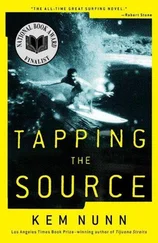
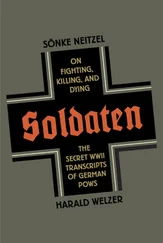

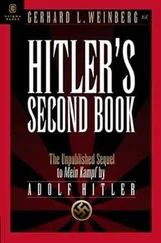
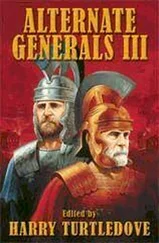
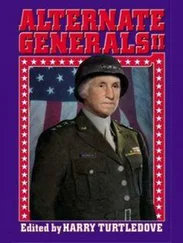

![Traudl Junge - Hitler's Last Secretary - A Firsthand Account of Life with Hitler [aka Until the Final Hour]](/books/416681/traudl-junge-hitler-s-last-secretary-a-firsthand-thumb.webp)



